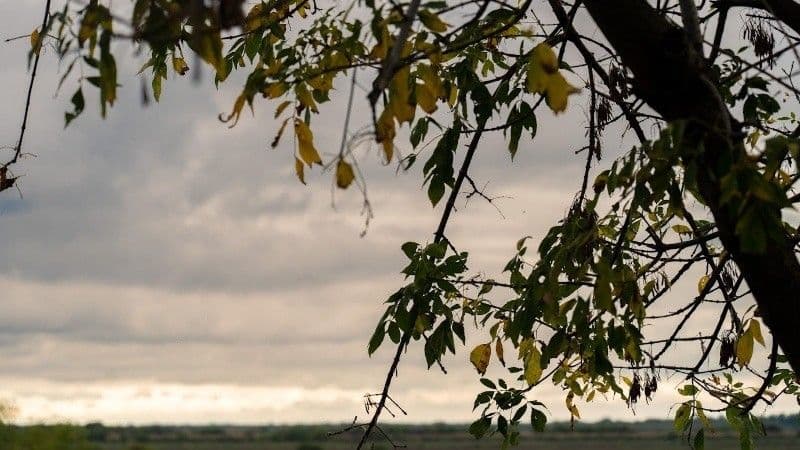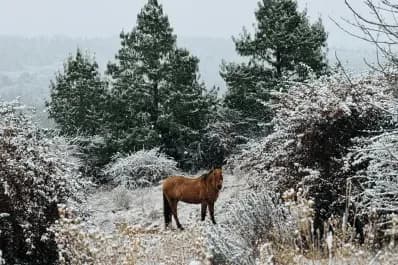Rosario's Temperamental Skies: Decoding the City's Unique Climate Story
Unravel Rosario's dynamic climate. From daily shifts to its unique seasonal rhythm and long-term trends, discover how weather shapes life in this vibrant Argentinian city.

Beyond Today's Clouds: The Immediate Pulse
Stepping out in this July, one might wonder if a warm jacket or a light shirt is the order of the day. As of early Tuesday, July 22, 2025, the city awakens to a largely overcast sky, painting a cool, subdued picture. High humidity in the pre-dawn hours has woven a blanket of mist across various neighborhoods, a characteristic embrace of Rosario's winter mornings. Temperatures are expected to hover between a chilly 5°C minimum and a mild 17°C maximum, making it a day to appreciate layers. The chance of rain remains remarkably low, with precipitation probabilities barely registering at 2% during the day and 4% at night. Wind gusts will add a noticeable chill, reaching up to 28 km/h by day and slightly stronger at 30 km/h after dusk. While the sun's rays are muted by cloud cover, the UV index is still noted at a level 3, reminding residents to be mindful even on cloudy days. Looking ahead, Wednesday promises to be the week's coldest, dropping to a 7°C minimum and only reaching 15°C. This pattern of cool, cloudy, but dry days is set to persist until at least Saturday, offering a consistent, albeit somewhat gray, atmospheric rhythm for the week.

Seasons in Symphony: Rosario's Climatic Character
While the daily forecast provides a snapshot, Rosario's true climatic personality unfolds across its distinct seasons. The city is renowned for a rather peculiar climate, marked by a stark contrast between its summer and winter months. Summers here are typically clear, intensely hot, and notably humid, often making the air thick and heavy. This period sees temperatures frequently soaring into the upper 20s and low 30s Celsius, sometimes even climbing above 35°C, demanding a reliance on air conditioning and shaded retreats. In stark contrast, Rosario's winters are generally short, a welcome respite from the summer heat, characterized by being partially cloudy and distinctly cold. While the average annual temperature range settles between 6°C and 31°C, winter nights can occasionally dip below zero, catching unprepared residents off guard. The city also receives a significant amount of rainfall, with an estimated annual precipitation of 1081 mm, primarily concentrated outside the drier winter months. This seasonal ebb and flow dictates much of life in Rosario, from agricultural cycles to leisure activities, creating a dynamic backdrop for its inhabitants.
Life Under the Rosario Sky: Adapting to the Extremes
Living in means embracing a wardrobe that can pivot from light summer wear to substantial winter layers with little notice. The city's climatic extremes, particularly the sweltering, humid summers and the often-chilly winters, necessitate a degree of practical adaptation for its residents. When summer highs push past 35°C, the rhythm of daily life shifts; siestas become more sacred, and evenings are reserved for outdoor gatherings once the heat subsides. Conversely, the short, cold winters, with temperatures sometimes dropping below freezing, call for warm clothing, heating, and an appreciation for indoor comforts. The prevalence of fog and high humidity, especially during cooler periods, also impacts daily commutes and visibility, demanding careful driving. Even the seemingly low UV index on a cloudy day serves as a reminder that the sun's power, usually so potent, is always a factor. Rosario’s precipitation, averaging over a meter annually, also means that residents are accustomed to sudden downpours, often necessitating quick shelter or a reliable umbrella. This constant interplay with the weather shapes everything from local architecture to cultural practices, embedding a resilient adaptability into the city's very fabric.
Whispers of Change: Understanding Long-Term Climate Trends
Beyond the daily fluctuations and seasonal rhythms, , like much of , is beginning to feel the subtle whispers of long-term climate change. While immediate forecasts focus on the coming days, a broader perspective reveals shifts in established patterns. Recent reports indicate that across the country, a significant majority of months have registered temperatures above normal, with only a few exceptions. For instance, in a recent year, only January, May, and June experienced slightly cooler-than-average temperatures. The remaining months were notably warmer, with April and September standing out due to exceptionally warm anomalies. This trend toward warmer conditions, particularly the occurrence of "extremely warm anomalies," suggests a broader climatic shift that could influence Rosario's future. While the city's unique blend of hot, humid summers and short, cold winters might seem stable, these underlying trends imply a potential for more frequent or intense heatwaves, altered precipitation patterns, and perhaps even milder winters over time. Understanding these subtle shifts is crucial for urban planning, agricultural strategies, and ensuring the continued well-being of Rosario's residents as they navigate an evolving climate.
Related Articles

Rosario's Atmospheric Embrace: Navigating the City's Seasonal Charms

Rosario's Atmospheric Embrace: Navigating the City's Seasonal Charms

From Humid Hues to Winter Whispers: Decoding Rosario's Climate Story

From Humid Hues to Winter Whispers: Decoding Rosario's Climate Story

The Pulse of Córdoba: Decoding Its Temperate Yet Unpredictable Temperatures

The Pulse of Córdoba: Decoding Its Temperate Yet Unpredictable Temperatures

When Winter Feels Like Summer: Unpacking Tucumán's Climate Paradox
